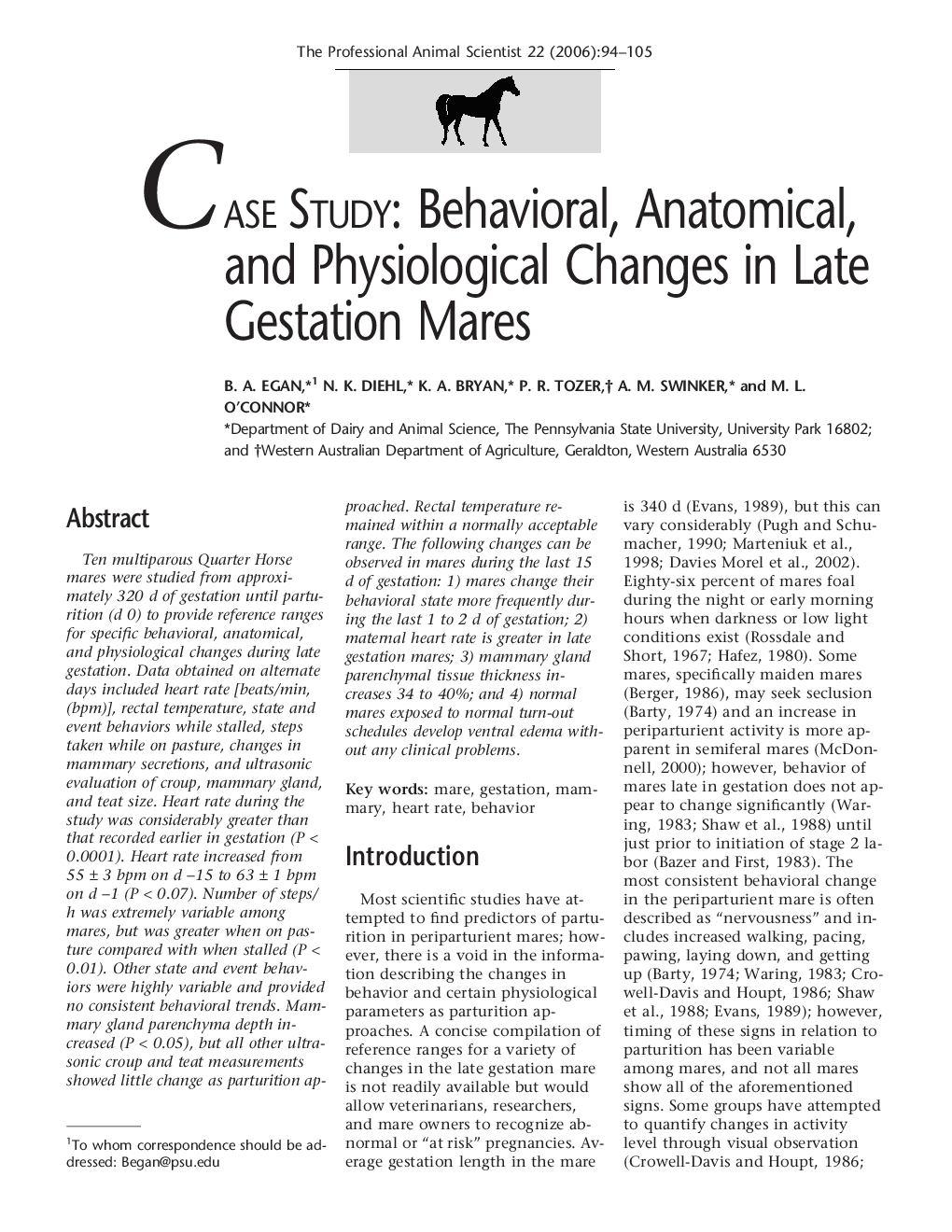| Article ID | Journal | Published Year | Pages | File Type |
|---|---|---|---|---|
| 2454624 | The Professional Animal Scientist | 2006 | 12 Pages |
Abstract
Ten multiparous Quarter Horse mares were studied from approximately 320 d of gestation until parturition (d 0) to provide reference ranges for specific behavioral, anatomical, and physiological changes during late gestation. Data obtained on alternate days included heart rate [beats/min, (bpm)], rectal temperature, state and event behaviors while stalled, steps taken while on pasture, changes in mammary secretions, and ultrasonic evaluation of croup, mammary gland, and teat size. Heart rate during the study was considerably greater than that recorded earlier in gestation (P < 0.0001). Heart rate increased from 55 ± 3 bpm on d â15 to 63 ± 1bpm on d â1(P < 0.07). Number of steps/ h was extremely variable among mares, but was greater when on pasture compared with when stalled (P < 0.01). Other state and event behaviors were highly variable and provided no consistent behavioral trends. Mammary gland parenchyma depth increased (P < 0.05), but all other ultrasonic croup and teat measurements showed little change as parturition approached. Rectal temperature remained within a normally acceptable range. The following changes can be observed in mares during the last 15 d of gestation: 1) mares change their behavioral state more frequently during the last 1 to 2 d of gestation; 2) maternal heart rate is greater in late gestation mares; 3) mammary gland parenchymal tissue thickness increases 34 to 40%; and 4) normal mares exposed to normal turn-out schedules develop ventral edema without any clinical problems.
Related Topics
Life Sciences
Agricultural and Biological Sciences
Animal Science and Zoology
Authors
B.A. Egan, N.K. Diehl, K.A. Bryan, P.R. Tozer, A.M. Swinker, M.L. O'Connor,
